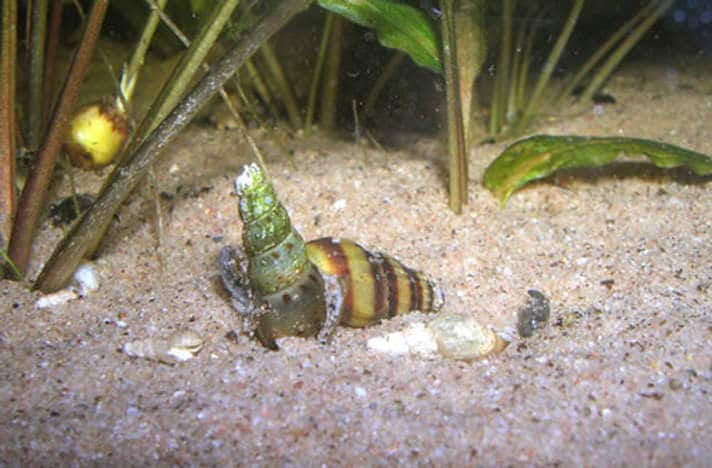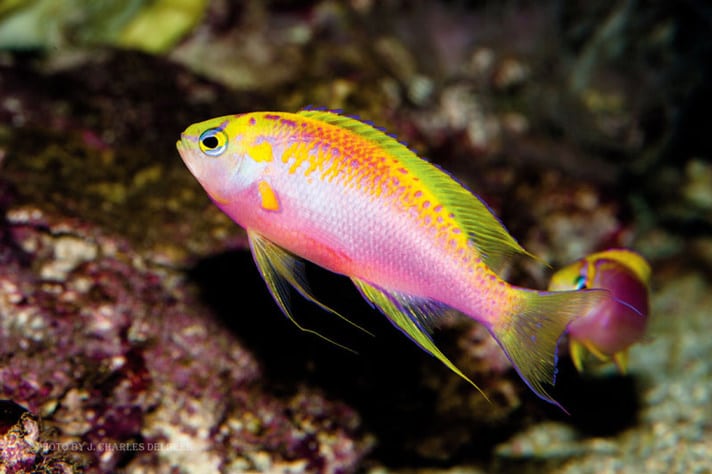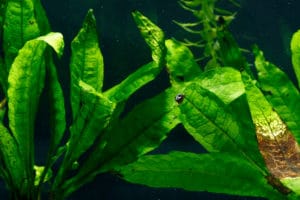Identification
Pest aquatic snails are most commonly ramshorn snails, tadpole snails and turret snails. Ramshorn snails (Planorbis spp.) have flat, spiral shells and most are small (less than a quarter-inch across). Tadpole snails or pond snails (Physa and Physella spp.) have bulbous, translucent-brown shells up to a half-inch long. They lay their eggs in distinctive jelly-like clumps. Turret snails or Malayan livebearing snails (Melanoides tuberculata) have conical shells up to an inch long with purple flecks. They are nocturnal and prefer to burrow through sand, but are sometimes active by day.
Harmful Snails
Aquatic snails have positive as well as negative qualities. Turret snails do an excellent job of keeping the sediment clean, consuming organic material and preventing excessive anaerobic decay. Tadpole and ramshorn snails eat algae, often more thoroughly and delicately than algae-eating fish.
On the other hand, excessive numbers of aquatic snails are unsightly and add appreciably to the stocking level of the fish aquarium. Should the aquatic snails die all at once, the subsequent processes of decay will add ammonia to the aquarium water while removing oxygen, neither of which is helpful. Exceptionally, aquatic snails may even damage delicate or tender aquatic plants, though this is far less of an issue than is commonly supposed.
Like any wet object, an aquatic snail moved from one aquariums to another can carry the free-living stages of parasites such as whitespot and velvet. Snails taken from the wild (as opposed to ones born in aquaria) can carry a variety of parasites including ones that affect humans, Bilharzia being the most notorious. As ever, adopt sensible hygiene procedures when working with your aquarium and consult your medical practitioner for healthcare advice.
Snails and Aquarium Conditions
Aquatic snail populations go up or down depending on how much they have to eat. Most snails eat fish feces, uneaten fish food, algae and decaying plant material. Aquariums with lots of these things available will likely have other problems too, including overstocking, overfeeding, under-filtering, insufficient water changes, minimal aquarium cleaning, and poor plant growth. Looked at from this perspective, snails are more a symptom of underlying problems than a problem in themselves.
Aquatic snails can also be indicators of sudden changes in water chemistry or quality. Turret snails in particular will leave the substrate if they feel stressed and move to the top of the aquarium where the water is most richly oxygenated. If hundreds of turret snails suddenly appear at the waterline, it’s a very good sign there’s a serious problem with the aquariums.
Molluscicides
Molluscicides are chemicals that kill mollusks, including aquatic snails. Copper and potassium permanganate are the two classic molluscicides, but both are toxic to fish and shrimps as well, and potassium permanganate is also toxic to aquatic plants and aquarium filter bacteria. Even if the aquatic snails are the only animals to die, having hundreds or thousands of decaying snails will raise ammonia levels while reducing the amount of oxygen in the aquarium water. As a rule then, molluscicides are risky and tend to do more harm than good.
On the other hand, permanganate solution at up to 10 mg/l can be used to remove snails and snail eggs from plants before they are added to the aquarium.
Snail-Eating Fish
Many fish eat snails if sufficiently hungry, but the two groups commonly sold as cures for snail problems are botiine loaches and pufferfish. The botiine loaches, often called botias, including things like yo-yo loaches, skunk loaches and clown loaches. While some make good community fish, others are too aggressive or boisterous to keep with slow-moving fish. Pufferfish almost never work in community aquariums, and many require brackish water conditions to stay healthy.
In any case, adding fish to fix a snail problem may well exacerbate any underlying problems relating to overstocking and overfeeding, so think very carefully before adding one or more snail-eating fish to your aquarium. This is especially the case with botiine loaches that need to be kept in groups, not singly.
Assassin Snails
Assassin snails (Clea Helena) are pretty snails that get to about a half-inch in length. They eat small snails including turret snails. One snail per 1 to 2 gallons should soon establish a population that keeps pest snail population in check. Although unlikely to eliminate pest snails completely, if they do, they’ll also eat meaty foods like bloodworms as well as leftover fish food. They shouldn’t become pests themselves though, because they breed very slowly. Assassin snails aren’t difficult to keep and thrive in the same conditions as most tropical fish, but like all snails they are sensitive to copper-based medications.
Traps
Snail traps contain a place for bait as well as a trapdoor that lets snails in but prevents them from getting out. Their efficacy is limited, but if used repeatedly night after night for several weeks they may help reduce snail numbers.
Prevention
The best way to deal with snail problems is to prevent them from getting established in your aquarium. Disinfecting and quarantining plants has already been mentioned, and solid objects such as ornaments taken from snail-infected aquaria can be disinfected in the same way. Less frequently, snails get into aquaria in bags containing new fish. As always, keep shipping water separate from aquarium water by acclimating new livestock via some sort of “drip method” process.
Posted By: Chewy Editorial
Featured Imagea: Via Neale Monks
Share:









